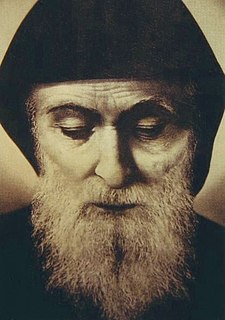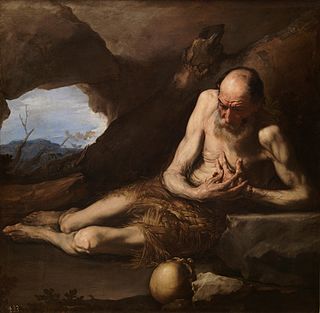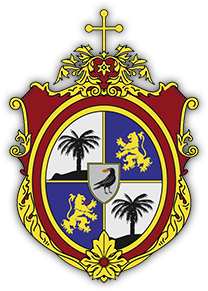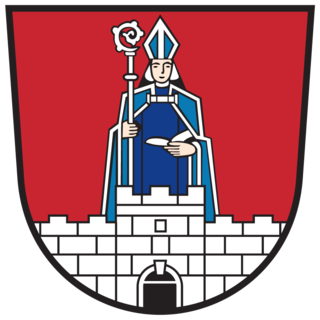
Saint Giles, also known as Giles the Hermit, was a hermit or monk active in the lower Rhône most likely in the 6th century. Revered as a saint, his cult became widely diffused but his hagiography is mostly legendary. A town that bears his name grew up around the monastery he purportedly founded, which became a pilgrimage centre and a stop on the Way of Saint James. He is traditionally one of the Fourteen Holy Helpers.

Saint Marinus was the founder of a chapel and monastery in 301. From this initial community the state of San Marino later grew.

Onuphrius lived as a hermit in the desert of Upper Egypt in the 4th or 5th centuries. He is venerated as Saint Onuphrius in both the Roman Catholic and Eastern Catholic churches, as Venerable Onuphrius in Eastern Orthodoxy, and as Saint Nofer the Anchorite in Oriental Orthodoxy.

Charbel Makhlouf, O.L.M., also known as Saint Charbel Makhlouf or Sharbel Maklouf, was a Maronite monk and priest from Lebanon. During his life he obtained a wide reputation for holiness and he has been canonized by the Catholic Church.

Ammon, Amun, Ammonas, Amoun (Ἀμοῦν), or Ammonius the Hermit was a 4th-century Christian ascetic and the founder of one of the most celebrated monastic communities in Egypt. He was subsequently declared a saint. He was one of the most venerated ascetics of the Nitrian Desert, and Saint Athanasius mentions him in his life of Saint Anthony. His name is the same as that of the ancient Egyptian god Amun.

May 22 - Eastern Orthodox Church calendar - May 24

Gerard or Gerard Sagredo was the first bishop of Csanád in the Kingdom of Hungary from around 1030 to his death. Most information about his life was preserved in his legends which contain most conventional elements of medieval biographies of saints. He was born in a Venetian noble family, associated with the Sagredos or Morosinis in sources written centuries later. After a serious illness, he was sent to the Benedictine San Giorgio Monastery at the age of five. He received excellent monastic education and also learnt grammar, music, philosophy and law.

Paul of Thebes, commonly known as Paul, the First Hermit or Paul the Anchorite, is regarded as the first Christian hermit, who was claimed to have lived alone in the desert of Egypt from the age of sixteen to the age of one hundred and thirteen years old. He is not to be confused with Paul the Simple, who was a disciple of Anthony the Great. He is venerated as a saint by the Catholic Church as well as the Orthodox Church.

January 9 - Eastern Orthodox liturgical calendar - January 11

Robert of Arbrissel was an itinerant preacher, and founder of Fontevraud Abbey. He was born at Arbrissel and died at Orsan Priory in the present department of Cher.

Pope Gabriel VII of Alexandria was the 95th Coptic Orthodox Pope of Alexandria and Patriarch of the See of St. Mark.

Sabbas the Sanctified (439–532), a Cappadocian-Syrian monk, priest and saint, lived mainly in Palaestina Prima. He was the founder of several convents, most notably the one known as Mar Saba. The saint's name is derived from Aramaic: סַבָּא Sabbāʾ "old man".

The Order of Saint Paul the First Hermit, commonly called the Pauline Fathers, is a monastic order of the Roman Catholic Church, founded in Hungary during the 13th century. Members of the Order use the nominal letters O.S.P.P.E. after their names.

Saint Procopius of Sázava was a Czech canon and hermit, canonized as a saint of the Catholic church in 1204.

Paternian or Paternianus is the name of an Italian saint. A native of Fermo who escaped to the mountains during the persecutions of Christians by Diocletian, he was then appointed bishop of Fano by Pope Sylvester I.

Eymoutiers is a commune in the Haute-Vienne department in the Nouvelle-Aquitaine region in western France.

Saint Chariton the Confessor was a Christian saint. His remembrance day is September 28.
Andrew Zorard was a Benedictine monk originating from Poland but active in Slovakia, who is venerated as a saint in the Catholic Church and the Orthodox Churches
Saint Thomas the Hermit is a Saint of the Coptic Orthodox Church, he is also known as "Saint Thomas the Anchorite", "Saint Thomas of Shenshif" or simply as "Abba Thomas"[(Coptic word meaning Father) (Αw-ba)Sahidic (Αw-va)Bohairic]. Saint Thomas was born in Upper Egypt, in a small village known as "Shenshif". He is revered by the Coptic Orthodox Church, since he is one of the early Anchorites, or Desert Fathers. Little is commonly known about him.
This page is based on this
Wikipedia article Text is available under the
CC BY-SA 4.0 license; additional terms may apply.
Images, videos and audio are available under their respective licenses.















